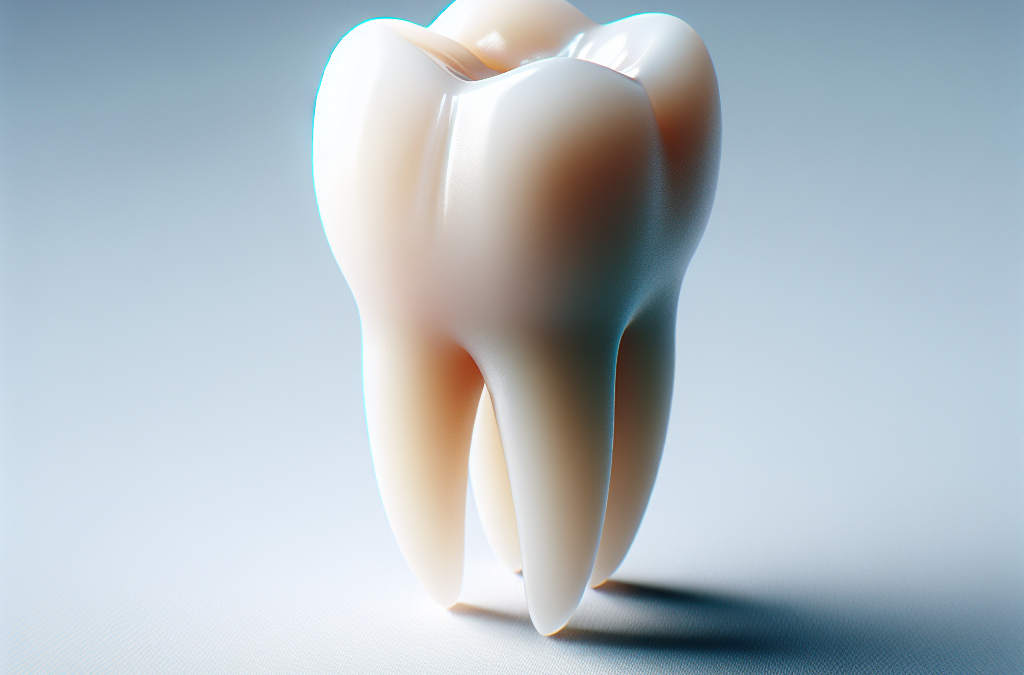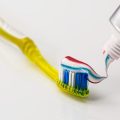So, you just had a tooth knocked out. Ouch! It’s a situation no one wants to be in, but accidents happen. Now, you’re left wondering how long you should wait before getting that tooth re-implanted. After all, time is of the essence when it comes to saving your pearly whites. In this article, we’ll explore the ideal timeframe for re-implanting a lost tooth and provide you with some tips on what to do in the meantime. Trust us, you’ll want to keep reading to ensure you make the best possible decision for your dental health.
Factors Affecting Re-implantation
Condition of the Lost Tooth
The condition of the lost tooth plays a crucial role in determining whether it can be successfully re-implanted or not. If the tooth is intact with minimal damage, the chances of a successful re-implantation are higher. However, if the tooth is severely fractured or damaged, the likelihood of a successful re-implantation decreases significantly.
Time Since Tooth Loss
Time is of the essence when it comes to re-implanting a lost tooth. The longer the tooth is outside of the mouth, the lower the chances of a successful re-implantation. Ideally, a lost tooth should be re-implanted within 30 minutes to an hour after it has been avulsed. The longer you wait, the more likely it is that the tooth’s delicate structures will deteriorate, making re-implantation more difficult.
Type of Tooth
Not all teeth have the same potential for successful re-implantation. Front teeth, also known as incisors and canines, have a better chance of being re-implanted successfully due to their single roots and simpler anatomy. On the other hand, premolars and molars have multiple roots and complex anatomy, making re-implantation more challenging.
Age of the Patient
The age of the patient can affect the re-implantation process. Children and adolescents generally have a higher chance of successful re-implantation due to their more substantial healing capabilities and less root development. However, it is still possible to re-implant a lost tooth in adults, although the success rate may be slightly lower.
Immediate Steps to Take
Handle the Tooth Carefully
When handling a lost tooth, it’s essential to be gentle and careful. Avoid touching the root of the tooth as much as possible, as this can damage delicate tissues and decrease the chances of successful re-implantation. Instead, hold the tooth by the crown, which is the chewing surface.
Rinse the Tooth
If the tooth is dirty or contaminated, it can be rinsed briefly with milk or saline solution. However, it’s crucial not to scrub or use any cleaning agents on the tooth, as this can damage the specialized cells on the root surface that are vital for successful re-implantation.
Reposition the Tooth
Before seeking professional dental care, you can try to reposition the tooth back into its socket gently. Ensure that the tooth is facing the right way and align it as best as possible with the other teeth. However, be cautious not to force the tooth and only attempt repositioning if you are confident in doing so.
Preserve the Tooth
If repositioning the tooth is not possible or if you are uncomfortable attempting it, you should preserve the tooth in an appropriate medium. The ideal medium for tooth preservation is milk. Alternatively, the tooth can also be stored in the patient’s saliva or a specialized tooth preservation solution available at some pharmacies.
Seek Dental Care
After taking immediate steps to preserve the tooth, it’s crucial to seek dental care as soon as possible. Time is a critical factor in the success of re-implantation, and a dental professional will be able to evaluate the tooth’s condition and determine the best course of action.
Dental Treatment and Evaluation
Initial Examination
During the initial examination, a dental professional will assess the tooth to determine its overall condition and viability for re-implantation. They will examine the tooth for any fractures, damage to the root, or signs of infection. Based on their evaluation, they will decide if re-implantation is feasible or if alternative treatment options are necessary.
X-Rays and Digital Imaging
X-rays and digital imaging are essential tools used to provide detailed images of the tooth, its root structure, and the surrounding tissues. These imaging techniques help in determining the extent of damage to the tooth, identifying any root fractures, and assessing the bone support around the tooth. They also aid in planning the re-implantation procedure.
Evaluation for Re-implantation
Based on the initial examination and imaging results, the dentist will evaluate whether the tooth is suitable for re-implantation. Factors such as the condition of the tooth, the extent of damage, and the patient’s overall oral health will be considered. If re-implantation is possible, the dentist will formulate a treatment plan accordingly.
Treatment Plan
Once the evaluation for re-implantation is complete, the dentist will develop a comprehensive treatment plan. This plan will outline the necessary steps for re-implantation, including any additional procedures that may be required, such as root canal treatment or bone grafting. The treatment plan will also include post-re-implantation care instructions and follow-up appointments.
Re-implantation Procedure
Tooth Stabilization Techniques
To ensure the successful re-implantation of the tooth, various stabilization techniques may be used. These techniques include bonding the re-implanted tooth to neighboring teeth using a splint, wire, or composite resin. Stabilization helps to immobilize the tooth during the initial healing period and promotes successful integration of the tooth back into the jawbone.
Cleaning and Disinfection
Before re-implantation, the lost tooth will be thoroughly cleaned and disinfected to minimize the risk of infection. The tooth’s root surface may be gently scrubbed to remove any debris or contaminants that may hinder successful re-implantation.
Splinting the Re-implanted Tooth
After the tooth has been repositioned and cleaned, it will be stabilized using a splint. The splint is usually made of wire, composite resin, or a combination of both. The splint helps to keep the tooth in place during the initial healing phase, allowing the surrounding tissues to reattach and support the re-implanted tooth.
Post-Re-implantation Care
Prescribed Medications
After re-implantation, the dentist may prescribe medications to help with pain management and prevent infection. These medications may include painkillers, antibiotics, and possibly an antimicrobial mouth rinse. It is essential to follow the prescribed medication regimen to ensure proper healing and minimize the risk of complications.
Follow-Up Appointments
Regular follow-up appointments with the dentist are crucial after re-implantation. During these appointments, the dentist will monitor the healing process and make any necessary adjustments to the splint. X-rays may also be taken periodically to assess the progress of reintegration and confirm the tooth’s stability.
Oral Hygiene Practices
Maintaining good oral hygiene is essential for the long-term success of the re-implanted tooth. It is important to brush gently and floss carefully around the re-implanted tooth to prevent plaque buildup and minimize the risk of infection. Regular dental check-ups and professional cleanings are also necessary to ensure the tooth’s health and address any issues promptly.
Long-Term Prognosis
Success Rates of Re-implantation
The success rates of re-implantation vary depending on several factors, including the condition of the tooth, the time since tooth loss, and the patient’s overall oral health. On average, the success rate for re-implantation ranges from 10% to 90%, with higher success rates seen in cases where immediate re-implantation is performed.
Potential Complications
Despite the positive outcomes associated with re-implantation, there are potential complications that patients should be aware of. These may include infection, root resorption, pulp necrosis, and ankylosis, where the re-implanted tooth fuses directly to the jawbone. Regular monitoring and follow-up appointments with a dentist can help identify and address any complications promptly.
Alternative Options
In cases where re-implantation is not possible or not recommended, several alternative options may be considered. Dental implants, dental bridges, and partial dentures are some of the alternatives that can be discussed with a dentist. The choice of alternative treatment will depend on factors such as the patient’s oral health, budget, and aesthetic preferences.
Alternatives to Re-implantation
Dental Implants
Dental implants are a popular alternative to re-implantation. They involve the placement of a titanium screw into the jawbone, which serves as a replacement for the missing tooth root. A custom-made dental crown is then attached to the implant, providing a natural-looking and functional replacement for the lost tooth.
Dental Bridges
Dental bridges are another option for replacing a lost tooth. They consist of one or more artificial teeth, known as pontics, which are anchored to the adjacent natural teeth or dental implants. Dental bridges are a fixed prosthetic solution that provides both aesthetic and functional benefits.
Partial Dentures
Partial dentures are removable prosthetic devices that are used to replace one or more missing teeth. They consist of artificial teeth set on a metal or acrylic framework that attaches to the natural teeth for support and stability. While not as permanent or stable as dental implants or bridges, partial dentures offer a cost-effective option for tooth replacement.
Prevention of Tooth Loss
Maintaining Good Oral Hygiene
Practicing good oral hygiene is crucial in preventing tooth loss. Brushing twice a day with a fluoride toothpaste, flossing daily, and using an antibacterial mouth rinse can help remove plaque and prevent gum disease, decay, and other oral infections that may lead to tooth loss.
Regular Dental Check-ups
Regular dental check-ups are essential for early detection and treatment of any dental issues that can eventually lead to tooth loss. Dentists can identify signs of gum disease, decay, or other oral problems during routine examinations and provide appropriate intervention to prevent further tooth loss.
Protective Measures
Engaging in activities that may put your teeth at risk of injury, such as contact sports, should prompt the use of protective measures. Wearing a mouthguard can help cushion and protect the teeth from trauma, reducing the risk of avulsion and tooth loss.
Children and Lost Teeth
Primary Teeth vs Permanent Teeth
The loss of primary teeth, also known as baby teeth, differs from permanent tooth loss. Primary teeth naturally fall out to make way for permanent teeth, and their premature loss typically does not warrant re-implantation. However, if a permanent tooth is avulsed, immediate dental evaluation and re-implantation may be necessary to ensure proper oral development.
Immediate Dental Evaluation
If a child loses a tooth due to trauma or injury, it is crucial to seek immediate dental evaluation. Dental professionals can assess the situation and determine the best course of action, whether it involves re-implantation, monitoring, or considering alternative treatment options to preserve oral health and development.
Preventive Measures
To minimize the risk of tooth loss in children, preventive measures should be taken. Encouraging good oral hygiene practices, regular dental check-ups, and the use of protective gear, such as mouthguards during sports, can help reduce the occurrence of tooth loss in children.
Conclusion
Re-implantation of a lost tooth is a complex process that depends on various factors such as the condition of the tooth, time elapsed since tooth loss, type of tooth, and age of the patient. Immediate steps should be taken to carefully handle, rinse, reposition, and preserve the lost tooth before seeking dental care. Dental treatment and evaluation, including an initial examination and imaging, help determine the feasibility of re-implantation and formulate a treatment plan. The re-implantation procedure involves stabilizing the tooth, cleaning, and disinfection, followed by splinting. Post-re-implantation care involves prescribed medications, follow-up appointments, and maintaining good oral hygiene practices. The long-term prognosis, success rates, potential complications, and alternative options should be considered. Preventing tooth loss through good oral hygiene practices, regular dental check-ups, and protective measures is crucial, especially in children. Ultimately, seeking immediate dental care and following professional advice are essential in maximizing the chances of successful re-implantation and maintaining optimal oral health.












